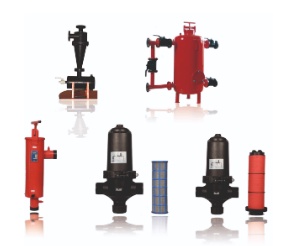In the realm of agriculture, the pursuit of efficiency is paramount. With the world's population steadily increasing and the strain on natural resources becoming more apparent, farmers are constantly seeking innovative solutions to enhance productivity while minimizing waste. Integrated Drip Lines have emerged as a game-changer in this quest for efficiency, revolutionizing the way water and nutrients are delivered to crops. In this blog, we explore the benefits of integrated drip lines in agriculture and how they contribute to maximizing efficiency across various farming operations.
What are Integrated Drip Lines?
Integrated drip lines, also known as drip irrigation systems, are a method of delivering water directly to the root zone of plants in a controlled and precise manner. Unlike traditional irrigation methods that rely on flooding or sprinklers, drip lines operate by emitting water slowly and evenly through a network of tubes or hoses positioned along the crop rows. These systems can be customized to suit the specific needs of different crops, soil types, and environmental conditions.
Benefits of Integrated Drip Lines:
1. Water Conservation:
One of the most significant advantages of integrated drip lines is their ability to conserve water. By delivering water directly to the root zone, drip systems minimize evaporation and runoff, ensuring that the majority of the water reaches the plants where it is needed most. This targeted approach to irrigation can result in water savings of up to 50% compared to conventional methods, making drip lines an environmentally sustainable choice for agriculture, particularly in regions facing water scarcity.
2. Enhanced Nutrient Management:
In addition to water, integrated drip lines can also be used to deliver fertilizers and other nutrients directly to the root zone of plants. This targeted application minimizes nutrient leaching and runoff, allowing for more efficient nutrient uptake by the crops. By tailoring the nutrient delivery to match the specific requirements of different crops and growth stages, farmers can optimize plant health and maximize yields while reducing the risk of nutrient pollution in soil and water bodies.
3. Improved Crop Health and Yield:
The precise control offered by integrated drip lines allows farmers to create optimal growing conditions for their crops. By maintaining consistent moisture levels in the root zone and avoiding overwatering or underwatering, drip systems help to prevent stress-induced diseases and promote healthy root development. As a result, crops grown with drip irrigation tend to exhibit better vigor, uniformity, and overall yield quality, leading to higher profitability for farmers.
4. Weed Suppression and Soil Health:
Traditional irrigation methods often result in the proliferation of weeds due to the uniform distribution of water across the field. In contrast, integrated drip lines deliver water only to the crop plants, minimizing weed germination and growth between rows. Furthermore, by reducing soil compaction and erosion associated with surface irrigation, drip systems help to preserve soil structure and fertility, creating a more hospitable environment for plant roots to thrive.
5. Labor and Energy Savings:
Once installed, integrated drip lines require minimal labor and energy to operate compared to traditional irrigation systems. The automation capabilities of drip systems allow for precise scheduling and control of irrigation events, reducing the need for manual intervention. This not only saves farmers time and labor costs but also conserves energy resources, making drip irrigation a sustainable choice for modern agriculture.
Conclusion:
Integrated drip lines represent a significant advancement in agricultural technology, offering a host of benefits for farmers seeking to maximize efficiency and sustainability. From water conservation and nutrient management to improved crop health and labor savings, drip irrigation systems have the potential to revolutionize the way we grow food. By harnessing the power of precision irrigation, farmers can optimize resource use, minimize environmental impact, and ultimately achieve greater productivity and profitability in their operations. As the global population continues to grow, the adoption of integrated drip lines will likely play a crucial role in meeting the world's food demand while safeguarding precious natural resources for future generations.


No comments yet